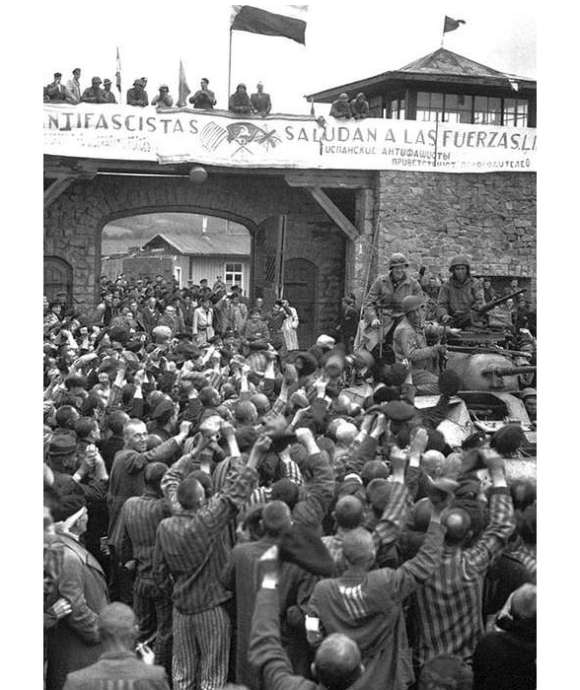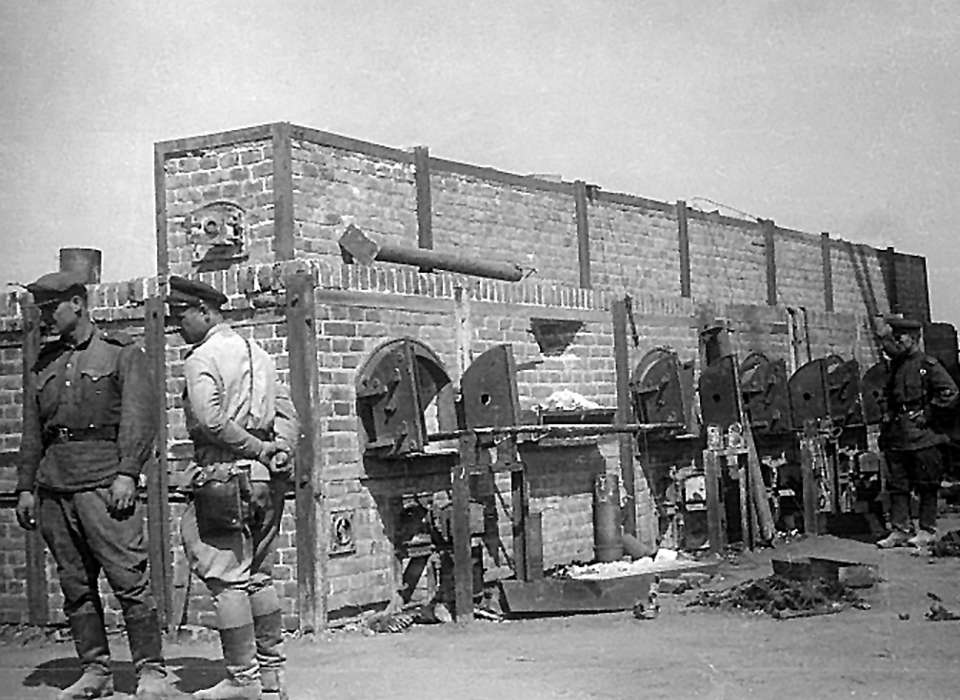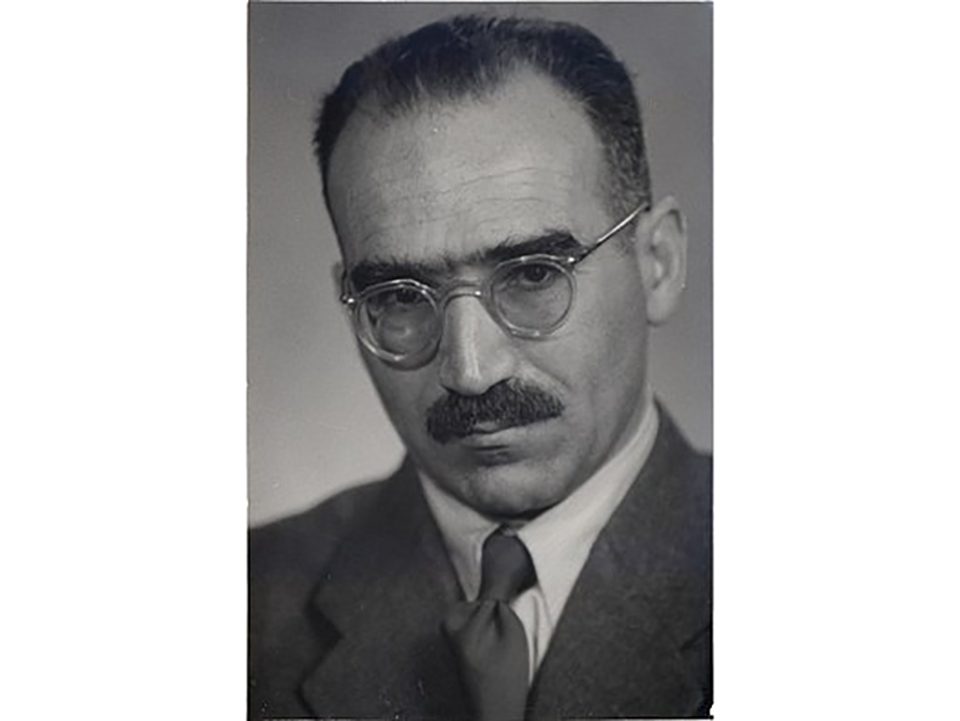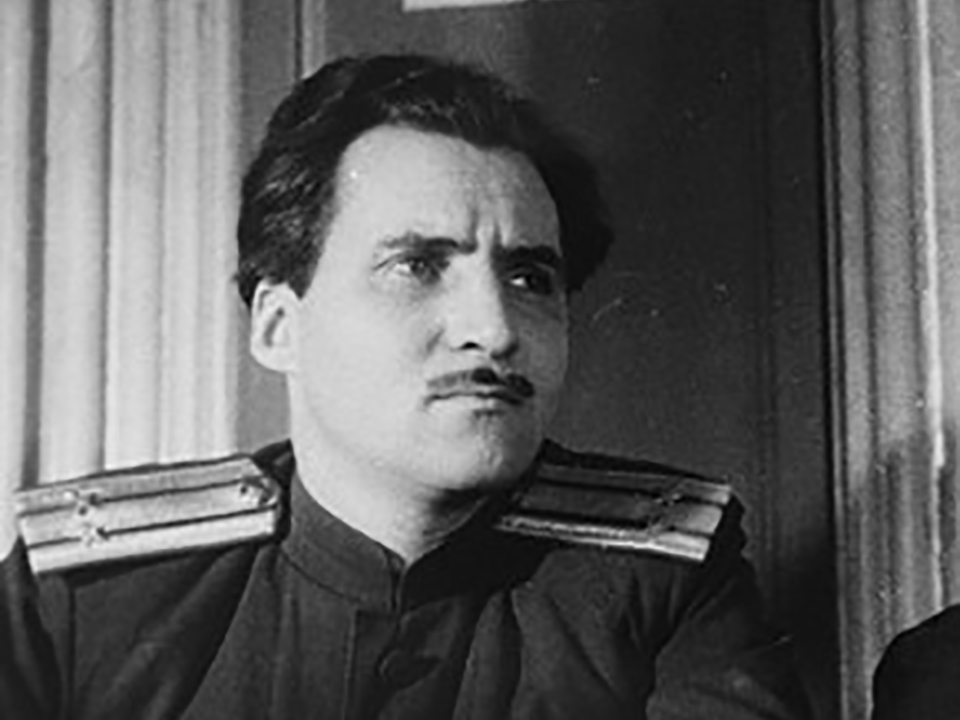Above Image: Soviet soldiers inspect the ovens at Majdanek, July 1944. Courtesy of Deutsche Fotothek.
On the night of July 22-23, 1944, soldiers of the Red Army came upon Majdanek, the first of the Nazi camps to be liberated. They freed just under 500 prisoners and occupied the nearby city of Lublin on July 24. What Soviet and Polish researchers uncovered and documented behind the camp’s electrified barbed wire, soon reinforced by the investigative work conducted by others outside of the USSR, definitively shaped our understanding of the Nazi genocide. While still largely unfamiliar to most Americans, the liberation of Majdanek was one of the most significant moments in the history of World War II and the Holocaust.
Its name, taken from Majdan-Tatarski, a suburb of the major industrial center of Lublin, Majdanek had originally been envisioned by the SS as a key link in the colonization and exploitation of the General Government, the area of Poland under German occupation. Jewish soldiers in the Polish army, who had been taken prisoner, had been doing work in Lublin for the firm, the German Supply Establishment, since late 1940. In July 1941, a month after the German invasion of the Soviet Union, Reichsführer-SS Heinrich Himmler traveled to Lublin, for a meeting with Odilo Globocnik, the notorious SS and Police Leader in the region. Himmler made his intentions clear to Globocnik—establish a concentration camp near the city that could hold up to 50,000 inmates. They would work in SS economic enterprises for as long as they could endure. Poles, many of them political prisoners, Jews, and Soviet prisoners of war would constitute this unfree labor army.
In short, Majdanek began as a forced-labor operation, not as an extermination center, like the Operation Reinhard camps (Treblinka, Belzec, and Sobibor) that Himmler later ordered Globocnik to create. Construction of the site, which was never completely finished, started in October 1941, when 2,000 Soviet POWs were dragooned. The first Jewish inmates, literally grabbed off the streets of Lublin, set foot in Majdanek in mid-December of that year. Non-Jewish Poles arrived two months later.
In 1942-43, Majdanek transformed, however. As the Nazi mass annihilation of European Jews escalated, the SS installed gas chambers and crematoria there. Polish, Czech, Slovakian, and Hungarian Jews were deported directly or diverted to Majdanek because of overcrowding at other killing centers. The Nazis also transported Jews from Germany, France, and the Low Countries to the camp. In 1943, SS personnel at Majdanek murdered thousands from the Warsaw and Bialystok Ghettos in Poland after Himmler called for their liquidation. The camp’s “efficiency” increased as its usefulness to the “Final Solution” expanded.
Even within the culture of the SS, a culture defined by cruelty and contempt for the “other,” the staff at Majdanek gained a reputation for savagery.
Historian Doris Bergen describes how the SS contingent at Majdanek “were known as sadists who enjoyed killing children in front of their mothers and forcing the prisoners to engage in deadly ‘sports.’”
If the gas chambers were mainly reserved for Jewish victims, Poles and Soviet POWs were often executed in mass shootings or systematically worked or starved to death, if typhus epidemics did not claim them. Records show that the camp leadership utilized gas vans as well.
It was at Majdanek that the largest one-day episode of killing at a single site during the Shoah occurred. After the uprisings at the Treblinka and Sobibor extermination camps and the resistance offered by Jews in the Bialystok Ghetto, Himmler ordered the elimination of all Jews in the Lublin area. On November 3, 1943, as part of Operation Harvest Festival, the SS separated Jews from other inmates at Majdanek and machine-gunned them in trenches, forcing people to kneel on corpses as they shot them. Dance music blasted from loudspeakers played for hours to drown out the shots and screams. By the end of November 3, SS and police units had murdered 18,000 Jews. The massacre stands out even in the history of Nazi barbarity.
The collapse of the German war effort in the Soviet Union in the spring and early summer of 1944 threatened Majdanek. A combination of the rapid Soviet advance following Operation Bagration, launched on June 22, 1944, and SS incompetence meant that most of Majdanek’s infrastructure of murder remained intact when Soviet units seized the camp a month later. Posterity will be forever grateful for both the Red Army’s speed and the Nazis’ incompetence.
Immediately, Soviet and Polish researchers began the serious work of documentation. Though fault can certainly be found with aspects of this work, it is still extremely valuable. Moreover, looking through these initial investigations shows just how monumental a challenge it was to categorize what happened within the confines of Majdanek, a problem replicated when the Allies liberated other extermination camps, the concentration camps, and the killing centers for the disabled over the succeeding 10 months.
The Polish People’s Army’s Film Crew, under the direction of Aleksander Ford, created a powerful documentary about the camp. Released in 1944 and called Majdanek—The Cemetery of Europe, the film spares the reader little of the horror of the killing. The crew took shots of the excavations of mass graves and showed Majdanek’s piles of shoes, shoes that once belonged to real, flesh-and-blood human beings. Viewers can also lay eyes on the gas chambers and ovens and hear the testimony of liberated inmates removed from all over the European continent and sent to this hell. While the film says little about the special targeting of Jews—a major problem with much of the early Soviet and Communist coverage of the genocide, it is a landmark work in the history of Holocaust cinema and leaves deep imprints on viewers to this day.
Soviet journalist, Konstantin Simonov, struck a similar note when he authored a pamphlet, The Lublin Extermination Camp, in the summer of 1944. The pamphlet was quickly translated into many languages, including English. Reading Simonov exposes one to the fragility of human comprehension—how to find an adequate language and set of categories that can grasp the inhumanity and terror of a place like Majdanek. He introduces the text with a warning that there was so much more to learn about the camp and its operations, so many more witnesses to interview, and so many more of the dead to identify. “But having only this,” Simonov declares, “I cannot remain silent, I cannot wait. I want to speak at once, today, about the first traces of this crime that have been revealed, about what I have heard during the past few days, and what I have seen with my own eyes.” To edge his audience toward some limited understanding of what he saw, he lists the names of many of the murdered, names he extracted from a mountain of documents collected by the SS. “This frightful heap of documents was the grave mound of Europe, squeezed into one room.” Simonov notes how Jews and Soviet and Polish prisoners were among the earliest victims. He also records stories from witnesses about the horrors of November 3, 1943. The pamphlet then escorts the reader on a nightmarish journey through Majdanek, accompanied by photographs of the barbed wire and barracks, and, unforgettably, the crematoria surrounded by the charred remains of innumerable victims. If Simonov errs in the pamphlet in estimating the numbers of deaths in the camp at several hundred thousand (contemporary estimates range from 95,000 to 200,000), this is forgivable.
Konstantin Simonov. United States Holocaust Memorial Museum Photograph #79145, Courtesy of Central State Archive of Documentary Film and Photography.
The works of Ford and Simonov were truly momentous. They grappled, visually and through the written word, with a genocide, before “genocide,” as a word and concept (it was only coined by Rafael Lemkin in 1944), really existed. For that matter “Holocaust,” the not uncontroversial term which has become the central designator for the annihilation of European Jews, had not yet emerged as an organizing concept either. Thus, the Red Army’s liberation of Majdanek and the vital research which followed soon thereafter should find a deeper place in our historical awareness of the Third Reich’s crimes. The camp’s discovery yielded irrefutable evidence of the Nazi extermination system and gave even greater impetus to the quest for justice for the victims comprising this “cemetery of Europe.”

Where Murder Was a Way of Life: The Mauthausen Concentration Camp
Mauthausen, one of the worst of the Nazi concentration camps, was liberated by the American 11th Armored Division on May 5, 1945.
Jason Dawsey, PhD
Jason Dawsey, PhD, is ASU WWII Studies Consultant in the Jenny Craig Institute for the Study of War and Democracy.
Cite this article:
MLA Citation:
APA Citation:
Chicago Style Citation:







![Max Fuchs, New York City cantor, sings as Rabbi Sydney [sic] Lefkowitz, Richmond, VA, conducts the first Jewish services from Germany.](/sites/default/files/styles/max_650x650/public/2025-10/image1.jpg)



